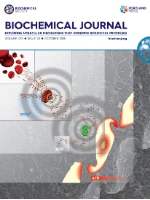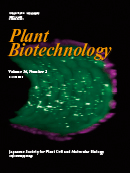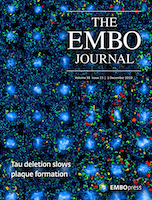
Journal of Advanced Research
Scope & Guideline
Fostering interdisciplinary dialogue and exploration.
Introduction
Aims and Scopes
- Molecular and Cellular Biology:
Research exploring molecular mechanisms underlying biological processes, including gene expression, cell signaling, and metabolic pathways. - Biomedical Applications:
Studies aimed at translating basic biological findings into therapeutic strategies, particularly in cancer, neurodegenerative diseases, and metabolic disorders. - Environmental and Agricultural Sciences:
Research addressing environmental challenges, agricultural productivity, and sustainable practices, including the study of microbiomes and plant interactions. - Nanotechnology and Material Sciences:
Investigations into the development and application of nanomaterials for medical and environmental applications, focusing on their therapeutic potential and bioactivity. - Bioinformatics and Genomics:
Utilization of computational tools to analyze genomic data, understand genetic variation, and explore complex biological interactions. - Immunology and Infectious Diseases:
Research targeting immune responses, pathogen interactions, and therapeutic approaches to combat infections and autoimmune conditions.
Trending and Emerging
- CRISPR and Gene Editing Technologies:
There is a notable increase in research utilizing CRISPR/Cas9 technologies for gene editing, highlighting its potential for therapeutic applications and functional genomics. - Microbiome Research:
An expanding focus on the human and plant microbiomes, exploring their roles in health, disease, and environmental interactions. - Artificial Intelligence in Healthcare:
The application of AI and machine learning in diagnostics, treatment personalization, and data analysis is rapidly gaining prominence in recent publications. - Sustainable and Green Chemistry:
An emerging trend in research prioritizing eco-friendly approaches to chemical synthesis and waste management, aligning with global sustainability goals. - Neurodegenerative Disease Mechanisms:
Increased investigations into the molecular underpinnings of neurodegenerative diseases, emphasizing novel therapeutic targets and neuroprotective strategies.
Declining or Waning
- Traditional Pharmacology:
Research centered on conventional pharmacological approaches is becoming less prominent as there is a growing emphasis on personalized medicine and biotechnology. - Invasive Surgical Techniques:
As minimally invasive and non-invasive methods gain traction, studies focusing on traditional invasive surgical techniques are decreasing in publication frequency. - Basic Plant Physiology:
While still relevant, the focus on basic physiological studies of plants is waning, with a shift towards more applied research in agricultural biotechnology. - Single-Pathway Studies:
Research investigating single pathways in isolation is being overshadowed by more comprehensive systems biology approaches that examine multiple interactions. - Animal Models in Early-Stage Research:
The reliance on animal models for early experimental research is declining as there is a push for alternative methods, including in vitro and computational models.
Similar Journals

BMB Reports
Elevating Research, Enhancing VisibilityBMB Reports is a distinguished open-access journal published by the Korean Society of Biochemistry & Molecular Biology since 2008, making significant contributions to the fields of biochemistry, molecular biology, and medicine. With a current impact factor that positions it in the Q2 category for Biochemistry and Q1 for Miscellaneous Medicine, this journal supports a wide dissemination of high-quality research findings, fostering robust dialogue among researchers, professionals, and students alike. Based in Seoul, South Korea, BMB Reports aims to publish innovative studies that advance our understanding of biochemical and molecular processes, thus shaping the future of health and medicine. The journal's commitment to open access enhances the visibility of its articles, allowing for greater accessibility and engagement in the scientific community. With notable rankings in both the Biochemistry and Molecular Biology categories, BMB Reports stands as a vital resource for those seeking to stay at the forefront of research in these rapidly evolving disciplines.

BIOSCIENCE REPORTS
Fostering Innovation in Biological ResearchBIOSCIENCE REPORTS, published by Portland Press Ltd, is a prestigious journal dedicated to advancing the fields of biochemistry, biophysics, cell biology, and molecular biology. Founded in 1981, the journal has established itself as a vital resource for researchers and professionals, boasting a significant impact factor and high rankings within its categories, including Q2 in Biochemistry and Q1 in Biophysics as of 2023. The journal’s commitment to high-quality, peer-reviewed research ensures that it remains an influential platform for the dissemination of cutting-edge scientific findings. While it operates under a traditional subscription model, it offers various access options to accommodate the needs of the scientific community. With ongoing publication through 2024, BIOSCIENCE REPORTS continues to play a crucial role in shaping discussions in the life sciences and fostering innovative research in biology.

JOURNAL OF BIOSCIENCES
Navigating the Landscape of Biosciences Since 1979JOURNAL OF BIOSCIENCES, published by the Indian Academy of Sciences, has established itself as a pioneering platform in the fields of biosciences, encompassing diverse research areas such as agricultural and biological sciences, biochemistry, genetics, molecular biology, and medicine. With an impressive trajectory since its inception in 1979, the journal has achieved notable recognition, securing a Q1 ranking in Agricultural and Biological Sciences and maintaining its place in the top quartiles for Biochemistry and Medicine as of 2023. With Scopus rankings placing it at #32 in General Agricultural and Biological Sciences and #65 in General Biochemistry, Genetics, and Molecular Biology, the journal reaches the 85th and 70th percentiles respectively, reflecting its impact and relevance in current scientific discourse. Although it does not offer open access, the JOURNAL OF BIOSCIENCES remains crucial for researchers, professionals, and students dedicated to advancing knowledge and innovation within the biosciences, providing a vibrant forum for high-quality research and comprehensive reviews.

TURKISH JOURNAL OF BIOLOGY
Fostering Collaboration in Agricultural and Biological SciencesTURKISH JOURNAL OF BIOLOGY, published by the Tubitak Scientific & Technological Research Council Turkey, is an esteemed peer-reviewed periodical that serves as a pivotal platform for advancing the fields of Agricultural and Biological Sciences. With a strong focus on innovative research across various biological domains, including Cell Biology, Genetics, and Microbiology, this journal not only fulfills the academic community's quest for high-quality research but also fosters collaboration and knowledge sharing among researchers. The journal's notable impact factors reflect its commitment to excellence, with its latest rankings placing it in Q2 in Agricultural and Biological Sciences (miscellaneous) and in Q4 for several other categories. By offering open access to its content, TURKISH JOURNAL OF BIOLOGY ensures that valuable biological insights are readily available to the global academic community. Its convergence from 2006 to 2024 signifies its longstanding influence in the biosciences, making it an essential resource for researchers, professionals, and students alike aiming to stay at the forefront of biological research and innovation.

BIOCHEMICAL JOURNAL
Illuminating the Path of Molecular DiscoveryBIOCHEMICAL JOURNAL, published by Portland Press Ltd, stands as a leading publication in the fields of Biochemistry, Cell Biology, and Molecular Biology, reflecting a commitment to advancing scientific knowledge since its inception in 1945. With a distinguished Q1 ranking across these categories and impressive Scopus rankings, the journal serves as an invaluable resource for researchers, professionals, and students alike, facilitating critical discoveries and innovative research practices. Although not currently offering open access, the journal provides a platform for high-quality peer-reviewed articles, ensuring rigorous standards in the dissemination of biochemical research. Spanning over seven decades and continuing through to 2024, the BIOCHEMICAL JOURNAL fosters an environment where cutting-edge biochemical research thrives, supporting the global scientific community's efforts to address complex biological questions and enhance our understanding of fundamental cellular processes.

SEMINARS IN CELL & DEVELOPMENTAL BIOLOGY
Bridging Theory and Practice in Life SciencesSEMINARS IN CELL & DEVELOPMENTAL BIOLOGY is a premier journal published by Academic Press Ltd - Elsevier Science Ltd, focusing on the vital domains of cell and developmental biology. With an impact factor that reflects its rigorous contributions to the field, this journal embodies the highest standards of academic excellence, currently ranking in the Q1 quartile for both Cell Biology and Developmental Biology categories as of 2023. Researchers and practitioners will appreciate its robust Scopus ranking, placing it within the top tiers of developmental biology and cell biology, with percentile ranks of 94th and 90th respectively, showcasing the journal's influential presence in the scientific community. The journal aims to disseminate comprehensive reviews, cutting-edge research articles, and significant advances in the understanding of cellular mechanisms and developmental processes, thereby catering to a diverse audience that includes researchers, scholars, and students dedicated to the life sciences. Given its commitment to open access, SEMINARS IN CELL & DEVELOPMENTAL BIOLOGY promotes widespread dissemination of knowledge, enhancing collaborative research efforts and driving innovation across biological disciplines.

Plant Biotechnology
Transforming Research into Agricultural Excellence.Plant Biotechnology is a distinguished journal published by the Japanese Society for Plant Cell and Molecular Biology, committed to advancing the field of plant biotechnology through the dissemination of high-quality research. With an ISSN of 1342-4580, this journal caters to a global audience interested in agronomy, crop science, and plant molecular biology. The journal has achieved notable rankings, including Q2 in Agronomy and Crop Science and Q2 in Plant Science, underscoring its relevance and impact in these fields according to the latest 2023 metrics. Furthermore, it holds a respectable position within Scopus rankings across multiple categories, indicating its contribution to the academic community. Although it is not an open-access journal, its regular publications, spanning from 1997 to 2024, feature cutting-edge studies that explore innovative approaches and technologies in plant science. Researchers, professionals, and students will find Plant Biotechnology an essential resource for staying informed on significant advancements and trends in plant research.

EMBO JOURNAL
Elevating scientific discourse through rigorous peer review.The EMBO JOURNAL, published by Wiley in Germany, is a renowned scientific journal that has been at the forefront of research in the fields of biochemistry, genetics, and molecular biology since its inception in 1982. With an impressive convergence of contributions leading up to 2024, this journal is recognized for its high impact, reflected in its Q1 rankings across multiple categories including Immunology, Molecular Biology, and Neuroscience. It holds a prestigious place in the academic community, standing out with an exemplary Scopus ranking of #3 in General Immunology and Microbiology and #6 in General Neuroscience, making it a critical resource for researchers, professionals, and students alike. The journal aims to publish transformative research that sheds light on the underlying mechanisms of biological processes, thus advancing our understanding of health and disease. While currently not offering open access, the EMBO JOURNAL continues to facilitate a rich exchange of knowledge through its rigorous peer-review process and commitment to excellence.

Non-coding RNA Research
Unlocking the Mysteries of Non-Coding RNANon-coding RNA Research, published by KEAI PUBLISHING LTD, is a leading open-access journal dedicated to advancing the field of non-coding RNA, a critical component in the landscape of molecular biology and genetics. Established in 2016, this journal aims to provide a platform for the dissemination of high-quality research focusing on the roles, mechanisms, and therapeutic potentials of non-coding RNAs in various biological processes and diseases. With impressive Scopus rankings placing it in the top quartile for both Biochemistry and Medical Biochemistry, as well as notable standings in Genetics and Molecular Biology, Non-coding RNA Research continues to attract contributions from globally recognized experts. The journal's commitment to open access ensures broad visibility and engagement with cutting-edge discoveries, thereby fostering an inclusive scientific dialogue that enhances understanding and innovation in this rapidly evolving field. For researchers and scholars, the opportunity to publish in a Q1 ranked journal not only validates their work but also enhances its impact, making Non-coding RNA Research an indispensable resource for anyone interested in the intricate workings of non-coding RNA.

FEBS LETTERS
Fostering Knowledge Exchange in Life SciencesFEBS LETTERS, published by Wiley, is a prestigious journal that has firmly established its place in the fields of biochemistry, biophysics, genetics, molecular biology, cell biology, and structural biology. With an esteemed history dating back to 1968, this journal continues to be a vital resource for researchers and professionals involved in the biological sciences. It boasts impressive quartile rankings, including Q1 statuses in several categories such as Biochemistry and Genetics, reflecting its high impact factor and significant contribution to scientific discourse. FEBS LETTERS provides a platform for innovative findings and critical reviews, fostering the exchange of knowledge and ideas within the scientific community. Although it operates under a subscription model, the journal ensures broad dissemination of groundbreaking research through its rigorous peer-review process. The vibrant discussions encouraged by articles published in FEBS LETTERS aim to inspire current and future generations of scientists to push the boundaries of biological understanding, making it an indispensable resource for anyone dedicated to advancing their knowledge in these dynamic fields.